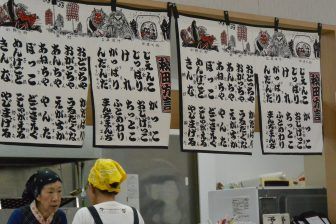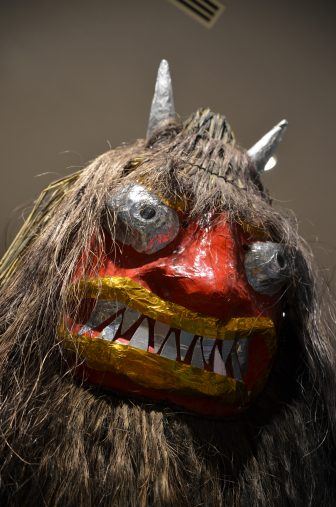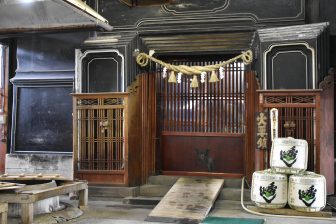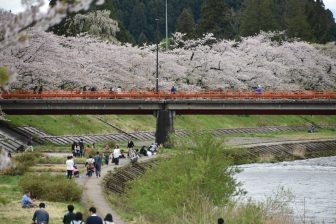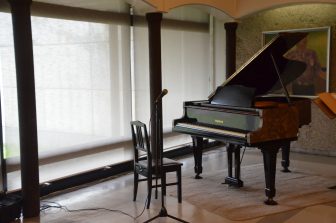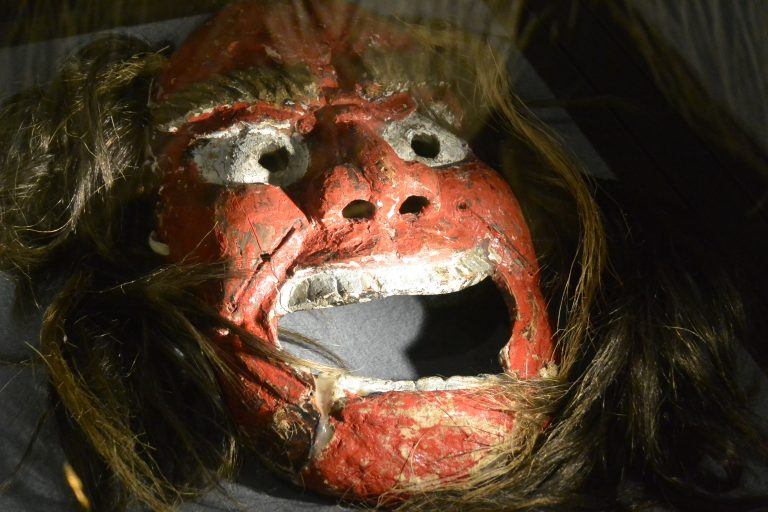
[ Sept.2018 ] The strong typhoon passed during the night and the next morning in Sakata in the Yamagata prefecture in Japan was fine.
We got up early and took the 7:55am train to Akita.
This was a local train with only two cars and it took about 1 hour and 50 minutes to get there.
At Akita, we rented a car and headed for the Oga Peninsula.
First, we stopped at the tourist bureau.
You can find it easily because two huge Namahages are standing just next to the main road.
One of them is as tall as 15 metres, apparently.
We asked for a good restaurant near here and they recommended a seafood restaurant attached to a small fish market called “Kaisen-ya”.
We had a Sashimi set menu whose main fish was flatfish.
We were very satisfied because it not only tasted great but also the price was very reasonable, which was 1,400 yen (£10, €11, $12.50).
After that, we drove to Namahage Museum and learned about Namahages.
A Namahage is an Oni (a monster with human body, usually red or blue face, horns and fangs), 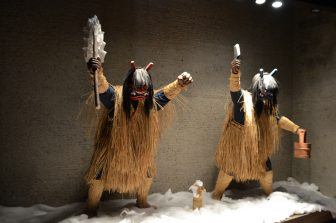
In the past, if you did not work hard during the winter and sat next to the fireplace for a long time, you would have had some light burns.
A Namahage came to those lazy people, saying “I will strip your burns!” and urged them to work harder.
Nowadays, they will come to your house, targeting children, saying something like “Have you been a good child?”.
They come into your house and do a kind of ritual for purification.
People at each house have to treat them with food and sake.
Apparently, about 80 households still follow this custom in the Oga peninsula.
After becoming Namahage ourselves briefly at the ‘Namahage Experience Corner’ in the museum, we went into another room and were surprised to see so many Namahages being exhibited.
It was quite a scene.
The person in charge there told us that Namahages all wear the straw cape, but there are no rules about the face.
Since a long time ago, the local people have been making them using their personal belongings.
The Namahages exhibited here were not only the ones used in the past but some are still being used.
“So before New Year’s Eve, we return them to the community” he said.
There was a real variety of faces, which was very interesting.
So in a way, it is a kind of competition to show your creativity.


